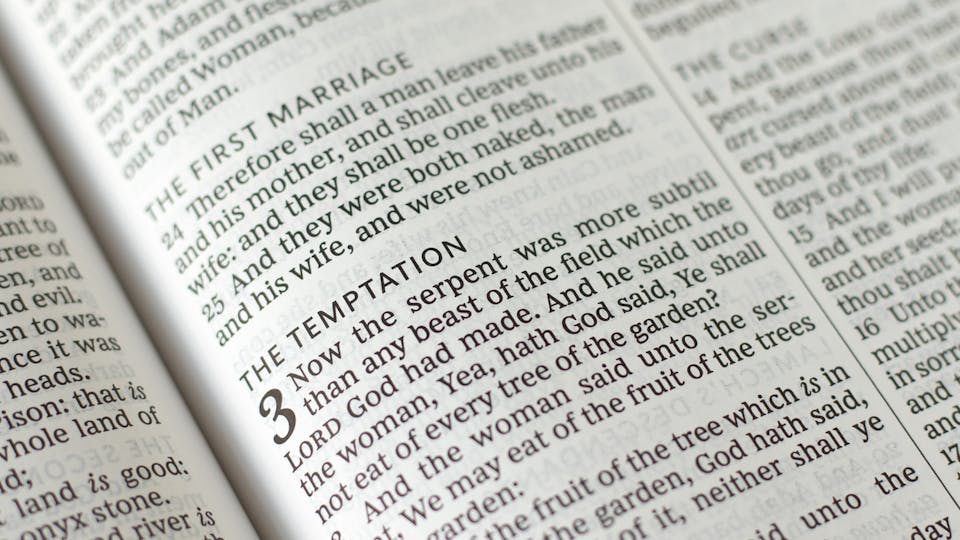Where is the Garden of Eden?

What if the Garden of Eden was real, and we’re standing over it today without knowing? You have probably heard different arguments about where the Garden of Eden could have been. Was it a real place? Could we find it? Or is it more about what Eden represents than where it might be?
Some Christians interpret Eden as a literal place, while others see it as symbolic, representing God's original design for humanity.
Interestingly, similar 'garden paradise' stories appear in ancient Mesopotamian texts, hinting at a broader human longing that the Genesis story uniquely answers.
If you've ever sat with your Bible and wondered about the location of God's first Garden, you're in good company. Today, let's go on a spiritual and historical journey together, guided by Scripture, geography, and the heart of God's story for humanity.
So, Where is the Garden of Eden?
What do We Know From the Bible

Let's start where it all began. In Genesis 2:8-14, where we read about a beautiful paradise which was planted by God Himself. It was the first home of man.
Eden was the world's first sanctuary, where God and people lived harmoniously. It was like a preview of heaven on earth. Adam and Eve had meaningful work that brought them joy, perfect relationships with each other and with God, and a world without pain, death, or disappointment.
When they chose to disobey God, everything changed. But here's the fantastic part: even as God explained the consequences of their choice, He also gave them hope. Genesis 3:15 contains the first promise that someone would come to fix what was broken, a promise that pointed to Jesus.
Eden shows us what God always intended for humanity. The good news is that Jesus came to restore what Adam lost in the Garden. He succeeded where the first Adam failed. Through Him, we can have that close relationship with God again.
The Bible ends as it began, in a garden. In Revelation 22, we see Eden restored: a river of life, the Tree of Life, and God's presence among His people.
Now, the Bible gives us some geographic hints. It mentions four rivers flowing from Eden: the Pishon, Gihon, Tigris (or Hiddekel), and Euphrates. While two of those, the Tigris and Euphrates, are still well-known today, the others are a bit more mysterious. The text also mentions lands like Havilah and Cush, adding to the intrigue.
So we have these river clues, but finding the Garden based on them has proved quite the adventure!
Theories About Eden's Location
Let's explore some leading theories with a Bible in one hand and a map in the other!
Where Might Eden Have Been?
- Ancient Iraq (Mesopotamia)
Most Bible scholars think Eden was located in what we now call Iraq, in the area between the Tigris and Euphrates rivers. These two rivers are mentioned in Genesis and still flow through Iraq today. This region was home to some of the world's first cities and civilizations, which makes sense if it was close to where humanity began.
Ancient Babylon was built in this area, and archaeologists have found evidence of advanced farming and culture going back thousands of years. If Eden were here, it would explain why this region became an important crossroads for early human civilization.
- The Armenian Mountains
Some early church leaders believed Eden was in the Armenian Highlands, where Turkey, Armenia, and Iran meet today. Several major rivers begin in this mountainous region, including sources for the four rivers mentioned in Genesis. The idea is that Eden was up in the mountains, and the rivers flowed down to water the earth.
This theory is interesting because Mount Ararat, where Noah's ark landed, is also in this region. It creates a nice connection between humanity's beginning in Eden and our fresh start after the flood.
- The Persian Gulf Area
Here's a fascinating newer theory: Eden might have been in what's now the Persian Gulf or Arabian Peninsula. Scientists using satellite technology have discovered that this area looked very different thousands of years ago. Before the last ice age, sea levels were much lower, and the Persian Gulf was a fertile river valley.
Some researchers think the original Eden might have been flooded and lost forever when the ice melted and sea levels rose. This could explain why we can't find the Pishon and Gihon rivers today, they might be underwater!
Some scholars suggest the Gihon could refer to the Nile or a now-lost African river, while the Pishon might have flowed through the Arabian Peninsula, possibly linked to the now-dry Wadi Batin.
And yet, no matter how advanced our tools get, we've never pinpointed Eden. No archaeologist has ever stood in a spot and declared, "Here it is!"
Which theory do you find most compelling, and why?
Why Can't We Find It?
Let's pause for a moment. Maybe we can't find Eden because we're not meant to.
Remember Genesis 3:24? After the fall, God placed cherubim and a flaming sword to guard the entrance to Eden. Humanity was barred from returning. That means Eden isn't just lost to history; it's spiritually inaccessible. It's a symbol now, a memory, a promise.
In many ways, Eden represents perfect communion with God and what will be restored. It's less about pinpointing coordinates and more about understanding the story's heart.
Eden's Deeper Meaning
Let's think of Eden as a garden and a temple, the first. It was a holy space, rich in life and beauty, where God and man lived in harmony.
And yet, even as the first humans chose disobedience, God didn't abandon His creation. From that moment on, the story of Scripture becomes one of restoration, a journey back to Eden. The Tabernacle in the wilderness, Solomon's Temple, and ultimately Jesus, the "second Adam" (Romans 5), reflect God's desire to dwell again with His people.
From Eden to Zion - A Journey of Redemption
Now, here's where it gets beautiful. The Bible doesn't leave us with a lost Eden. It gives us Zion, the heart of Israel.
God chose a specific land, Israel, to continue His covenant and call people back to Himself. Just as Eden was a beginning, Israel became a focal point for God's unfolding redemption. From Abraham's promise to Jesus's footsteps, the Holy Land is a living testimony to God's presence among His people.
So, even if Eden isn't within modern-day Israel, spiritually speaking, the journey from Eden to Zion is all about reconnection with God's purpose.
And guess what? You can walk this land today.
Do you think Eden was a real place or a spiritual metaphor? Let us know in the comments
In Conclusion
So, where is the Garden of Eden? It might have been in Mesopotamia. Or the Armenian mountains. Or beneath the Persian Gulf. We don't know for sure. But we know that Eden isn't just a "where." It's a "why." The real message of Eden isn't about geography; it's about God's heart for us.
Even though we can't return to that first Garden, the story of Eden points us toward something even better. God promises that one day, He'll create a new heaven and earth where He'll live with His people forever. The same God who walked with Adam and Eve in Eden wants to walk with you today.